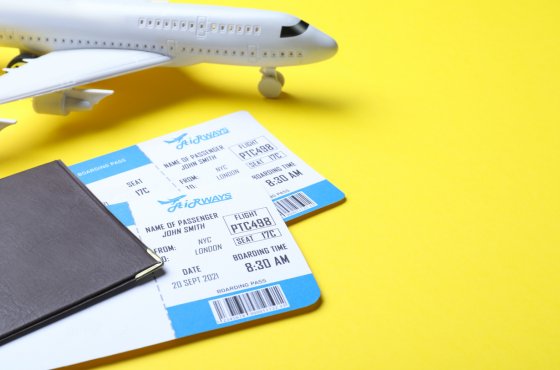Personal experience: life in the Arctic

Sergey Chernikov Photo: Vkontakte
Sergey Chernikov was 25 years old, he was born and raised in Moscow, but 2 a year ago moved to live in the Arctic in the Russian settlement of Barentsburg in Norwegian Spitsbergen. He told the publication The Villagewhy in the Arctic there are slippers, why it is impossible to drink more than two liters of spirits and where does the Russian village come from on Norwegian soil?
Why did I choose the Arctic
I was born in Moscow, but I do not like this city, it is too fussy and superficial. In Moscow, the concentration of people of the word, rather than deeds, per square kilometer of land is much higher than in other cities. In 15 years, I began to go to camps for outdoor activities, was mainly engaged in mountain tourism, mainly in the Caucasus. In 18 years, I myself became a guide in the same camps and started driving groups to the mountains on my own. In parallel, I was educated in Moscow, I studied at the National Institute of Business (Faculty of Management, Entrepreneurship and Starting a Business of my own). Having finished it, I realized that I needed a diploma only for a tick. During the classes at the university I was bored and uninteresting, already during my studies I began to understand that this was not mine. Every day I became more and more convinced that I would not work in the city. Soul wanted no office work at all.
Wildlife is close to me, and I also like the cold climate - these were my starting points for a job search. Accidentally on social networks I saw an announcement that guides are required for a new tourist season in Svalbard. I began to learn more about the offer and realized that this was the perfect combination for me: work in tourism, the Arctic climate and the place - a remote archipelago - you can pause there and not run.

Sergey Chernikov Photo: Facebook
22 December 2015, the first time I flew to the Svalbard archipelago. I did not go here for some impressions or, say, to try myself in incredibly difficult conditions. In addition, the conditions are all there is a full-fledged civilization. From the first day I felt at home. There was no enthusiasm or disappointment, expectations. I was driving to work.
Since then I have been working as a guide at the Grumant Center for Arctic Tourism and RussiaDiscovery. Guides are urban and field, they are responsible for completely different tourist products. The first ones are guided tours around the villages, mostly for those who arrived or came (by snowmobile, boat, ski or foot) for just one day.
I am a field guide and am responsible for multi-day programs, including both excursions within the villages and exits to the tundra to get acquainted with the nature and history of the archipelago. Groups come every week in winter and summer.
The tourist season starts in mid-autumn and lasts until mid-February. Then those who are busy in the travel industry, leave the Arctic on vacation - whoever, I usually return to Moscow for a few months. And on return, we begin to prepare for the new season.
Two countries
Legislatively Svalbard belongs to Norway. But a huge number of countries — Russia, the USA, Great Britain, Germany, France, Japan, the Netherlands, Bulgaria, Hungary, Denmark, Norway, Poland, the Czech Republic, Slovakia, Romania, Italy, Sweden, and others — began to sign the Spitsbergen Treaty since 1920, they have the right to conduct economic activity on the archipelago.
In fact, practically only Norway and Russia are present on the archipelago and are engaged in coal mining, science and tourism there.
The largest settlement of Svalbard is Longyearbyen. This is a Norwegian village with a population of 1 800 people. In Longyear, you will not meet anyone: Thais, Filipinos, Englishmen, Austrians, Italians, Germans - there live representatives of more than 40 nationalities! Barentsburg is mostly populated by Ukrainians. That in Soviet times, that now the majority of miners with their families come from Ukraine. This happened historically, since at the time of the inception of Soviet coal mining in Svalbard, the main forge of cadres of miners was in Ukraine.
The second largest here is Barentsburg, with a population of about 500 people. I live in it. Barentsburg is a city-family. Here they always greet on the streets, spend time outside of work together, take care of each other.
Longyear looks more harmonious in architectural terms, there are more shops and bars, hotels. But for me it's just a city in the north, where people live more fragmentedly, having their own limited circle of friends. Although everyone, of course, as in Barentsburg, knows each other, and in the case of major holidays or tragic accidents they unite.
Externally, the people here are no different from the average Russian, they wear ordinary clothes (those who work in the village are urban, and those who work in the field are sporty and tourist), but inside they are more open and friendly than the Muscovites.
Arctic life
There are many misconceptions about the Arctic. Perhaps most often I hear about how cold it is here. In fact, the climate in Svalbard is not severe, since the archipelago is washed by the warm current of the Gulf Stream. In the summer, usually plus 5 – 10 degrees Celsius, and in winter the air temperature rarely drops below minus 20 degrees. So this is a kind of tropics of the Arctic.
Another myth is the shortage of products. The goods necessary for life are brought to Longyearbyen from mainland Norway, and to Barentsburg mainly from Germany, partly from Russia. The quality of their good, musty, expired products for all the time I have not met. Prices do not differ much from Moscow. Yes, fruits on the shelves are rare, but do not forget that this is an island, so the main feature here is a huge amount of freshly caught fish.
There are no roads between the villages. In winter, you can reach your neighbors by snowmobile, and in summer, you can get there by boat or boat. Inside Longyear, Norwegians travel predominantly by car, but in Barentsburg, where there is only one street, you can walk to any point. Only during the polar night the school bus carries children to school and kindergarten.

Sergey Chernikov Photo: Vkontakte
There is very little time left for leisure, since I work with a tour group from 09: 00 to 22: 00. In the evening I confine myself to reading, meeting with friends or sleeping. Those who have more free time, attend sports clubs, theater studio. The studio is preparing performances for local residents and song and dance concerts for tourists. A special event every year is the cultural exchange between the two capitals of the archipelago: the Norwegians come to visit us, and we to them. We share culture, we get acquainted, we communicate.
Interesting is the case with alcohol. In the bars you can drink without restrictions, but in the quotas, established in the twentieth century. Miners who were not prepared for the conditions of the Arctic came to the archipelago, the infrastructure was just beginning to develop, there was no leisure time, people were starting to drink. At some point, the owners of the mines realized that their working capacity was declining, and they imposed restrictions.
Norwegians have restrictions on the purchase of strong alcohol over 22%, 14 – 22% fortified wine and beer: you can buy 24 beer cans, one liter of fortified wine and two liters of strong alcohol a month. Russians have quotas only for strong alcohol. Local residents buy alcohol using special cards for which records are kept, and tourists should definitely present a boarding pass when they buy.
If you want to taste the local flavor, then in Barentsburg there is a whole series of cocktails and shots with history. For example, "78". According to the legend, during the Soviet times polar explorers drank drinks of such a degree as they were. Barentsburg is located on the 78-th degree of northern latitude, therefore the shot contains 78 degrees, it is made of rum and liqueurs.
Why go to tourists
Every year, Svalbard is visited by about 80 thousands of tourists, and now the archipelago is gaining popularity. Everyone goes for the opportunity to look at the wild nature, but at the same time there is no need to sleep in the tent and a tent, there are hotels and all the conditions for the most fastidious. Another attraction here is the fact that you can see the northern lights and polar bears at a comfortable temperature, and not in the bitter cold. And Svalbard is more accessible than other areas in the Arctic. From Moscow, you can fly back and forth for 30 thousand rubles with a transfer in Oslo.
But you can not go outside the village without an armed guide.
Only if there is a license and a number of accompanying documents, then you can rent the weapon yourself. The rule is strict: last year a tourist from Ukraine walked through the archipelago without a guide or weapon - he was found and deported.
More tourists are attracted by the Russian settlement Pyramid mothballed in 1998. In it - the monumental buildings, soaked in the spirit of the times. The local hotel has modern rooms and old ones, in which they specifically left Soviet furniture and paraphernalia for tourists who want to see how it was. And in the vicinity - large glaciers, waterfalls, high mountains with sharp peaks.
If you want to come to Svalbard, be sure to bring your slippers. We decided to take off shoes not only at home, but also, for example, in museums, cafes, restaurants. This is a century-old tradition. The miners, going into the buildings, took off their shoes so as not to put coal dust in the house.
Incidentally, in coal mining - one of the main occupations of the local population in Barentsburg - not only men work, but also women. Although mostly they are busy working in the office, canteen, school. Tourism is actively developing, in Barentsburg about 70 people work with guests of the archipelago, and this is almost a fifth of the population. Children are also around 70, they can only complete 11 classes here, after which they go to the mainland for higher education. Repeatedly there have been cases of the return of those who were born here in Soviet times or in modern history. We have here and the whole dynasty miners there.
A trip to Svalbard is such an arctic detox, when you can take a break from the hustle and bustle and figure out what you really need. Residents of megalopolises often complicate where it is not necessary, think out where there is nothing. There is no such thing, everything is simple. Honestly, kindly and with a soul. Many tourists leave with the thought that they had lived incorrectly before that. For this, I love my job, I make people a little wiser.
Read also on ForumDaily:
How much did the United States buy Alaska from Russia?
Personal experience: how much is life in New Jersey
Personal experience. How much is life in Boston
Subscribe to ForumDaily on Google NewsDo you want more important and interesting news about life in the USA and immigration to America? — support us donate! Also subscribe to our page Facebook. Select the “Priority in display” option and read us first. Also, don't forget to subscribe to our РєР ° РЅР ° Р »РІ Telegram and Instagram- there is a lot of interesting things there. And join thousands of readers ForumDaily New York — there you will find a lot of interesting and positive information about life in the metropolis.











